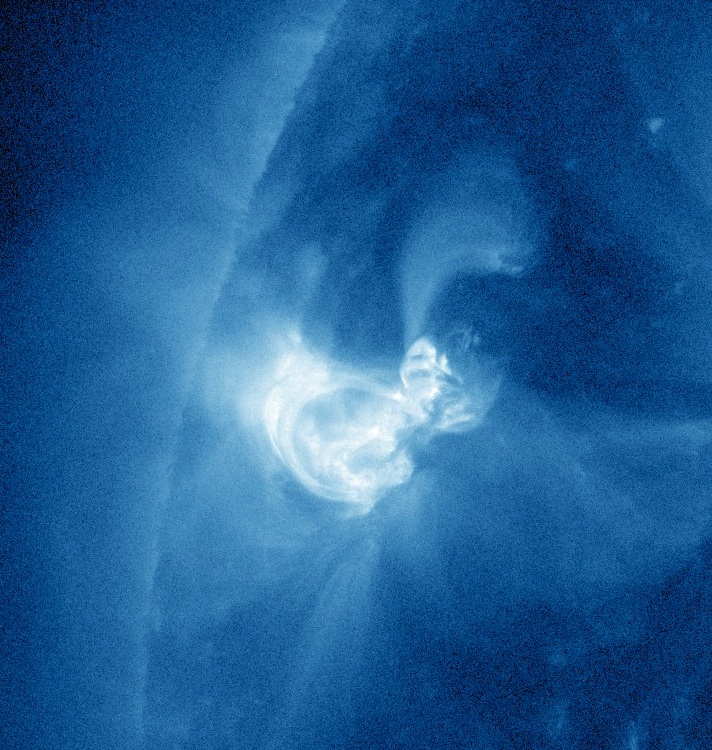Solar radiation storms continue. It takes about two days for the effects to reach Earth.
A solar flare is a sudden brightening observed over the Sun’s surface or the solar limb, which is interpreted as a large energy release of up to 6 × 1025 joules of energy (about a sixth of the total energy output of the Sun each second or 160,000,000,000 megatons of TNT equivalen.) They are mainly followed by a colossal coronal mass ejection also known as a CME. The flare ejects clouds of electrons, ions, and atoms through the corona of the sun into space. These clouds typically reach Earth a day or two after the event.
X-rays and UV radiation emitted by solar flares can affect Earth’s ionosphere and disrupt long-range radio communications. Direct radio emission at decimetric wavelengths may disturb operation of radars and other devices operating at these frequencies.
The radiation risks posed by coronal mass ejections are a major concern in discussions of a manned mission to Mars, the moon, or other planets. Energetic protons can pass through the human body, causing biochemical damage,[10] presenting a hazard to astronauts during interplanetary travel. Some kind of physical or magnetic shielding would be required to protect the astronauts. Most proton storms take at least two hours from the time of visual detection to reach Earth’s orbit. A solar flare on January 20, 2005 released the highest concentration of protons ever directly measured,[11] giving astronauts as little as 15 minutes to reach shelter.
Region 1748 has been quiet but current analysis shows it still has the potential for more large events. SWPC forecasters are watching this region very carefully as it rotates further on the disk and into a more geoeffective position.
A CME, from the X1 flare on 15 May, is expected to arrive here late on 17 May but very little effects are forecast.
